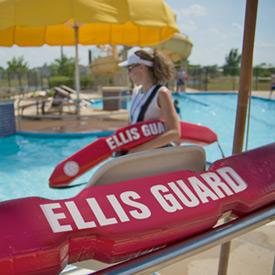
It is essential for both private and public pools to uphold strict safety rules to ensure the safety of swimmers. Public aquatic facilities should have a lifeguard on hand to oversee that these rules are enforced and are also available when an accident occurs.
Training in first aid, CPR, and AEDs are all safety precautions that a lifeguard should fully understand and practice on a regular basis. In addition, safety equipment such as rescue tubes is equally important to have nearby in case of an emergency. Using rescue equipment makes it safe for both the lifeguard and the person being rescued. The rescue tube is by far one of the most favored pieces of safety equipment for lifeguards.
What is a Rescue Tube?
A rescue tube is a 45 to 54-inch vinyl piece that is filled with foam for buoyancy. Typically rescue tubes are between three and six inches thick. It has a towline and a shoulder strap, which makes it easy for the lifeguards to constantly have it on hand. Here are a few tips for lifeguards who use rescue tubes:
- Make sure to keep the strap of the rescue tube over the shoulder and neck
- When sitting in a lifeguard chair keep the rescue tube on the thighs and hold the tow line in your hand to prevent it from getting caught in the chair
- When standing place the rescue tube across your stomach
Rescue tubes are usually red, yellow or orange so they can easily be seen when an emergency occurs. They are used to help lifeguards swim while they are bringing a rescued swimmer to the edge of the pool. Rescue tubes are especially important in rough waters such as the ocean because swimming and rescuing an injured swimmer at the same time is a challenging task.
In the past floatation devices weren't used, as frequently by lifeguards but today they have become a standard in the industry. Without rescue tubes lifeguards may find themselves in rescue situations that place their safety and the person being rescued in compromising positions. The fact that rescue tubes help both the lifeguard and individual being rescued swim back to safety is what makes rescue tubes so important around pools.
